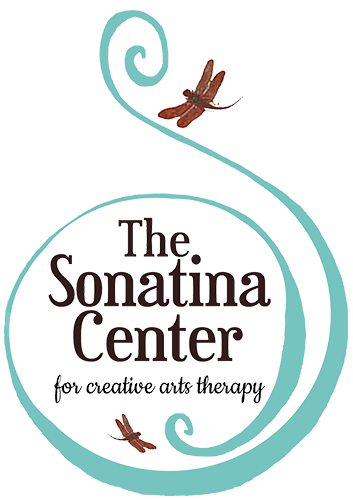What is Creative Arts Therapy?
When people think of therapy, we often picture sitting on a couch and talking to someone, maybe with a tissue in hand. Talk psychotherapy is one effective form of support, but there are others as well. Creative arts therapies not only support social and emotional wellbeing, but they also support physical, cognitive, communicative domains. Trained music and art therapists have a long history of supporting patients, including World War II veterans, individuals in psychiatric institutions, non-speaking people, and children using mediums like music, art, and movement to support their clients’ self-exploration and self-expression.
Music and art modalities are non-threatening ways for clients, regardless of musical or artistic ability, to develop a trusting relationship with a new therapist. Engaging in a fun, shared creative activity can jumpstart building a healthy therapeutic relationship and ease fears about coming to therapy. The symbolic nature of creative arts activities provides verbal, aural, visual, and physical outlets to express thoughts, emotions, and experience, regardless of age and ability. But, how does it work?
Engagement in music and art experiences activate multiple parts of your brain, including motor control and sensory centers, language centers, and emotional response centers. Painting a family portrait gives clients the opportunity to share their thoughts using colors, textures, shapes, and placement of members on the page, speak with their therapist about what they are drawing, and uncover patterns, feelings, and relationships through that imagery, all while practicing fine motor control and purposeful movements. In a music therapy session, playing a drum back and forth with a therapist gives clients practice taking turns, simulating conversation, engaging in non-verbal social play, refining gross and fine motor movements, sensory feedback about their actions, and opportunities for emotional expression. Even in play-centered experiences, clients are engaging in the therapeutic process and making progress toward their individualized goal areas.
Image Description: A graphic on a white background reads “Why Creative Arts Therapy?” Above, there are black and white drawings of a guitar, tambourine. music notes, an art palette, and a hand making pottery on a light blue checkered pattern. At the bottom reads TheSonatinaCenter.com/Blog.
Creative arts therapies can be emotional, difficult, and draining, too. Music and art can express the full range of human emotions, from excitement to anger to deep sadness. Your therapist is here to support any and all events that emerge in therapy sessions without judgement. So, even when it may just seem like fun and games playing instruments, writing songs, making art, and creating stories; it is all to support a client’s individual development. Creative and expressive arts therapists are trained professionals who can help nurture you or your loved ones areas of creative interest to create a valuable relationship for personal growth.
As the music therapy intern, I am thrilled to be putting my 4 years of foundational training in music therapy, psychology, and communication development into full-time clinical practice at the Sonatina Center. Creative arts therapies hold a valuable space for expression, growth, and connection. My bio is posted on our website and I am now available for intern-led music therapy sessions and lessons at a lower-priced rate through December 2021. To connect with me, schedule a free consult on our homepage or contact us at 603-978-4808. I hope to see you at the center!

